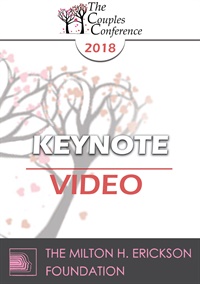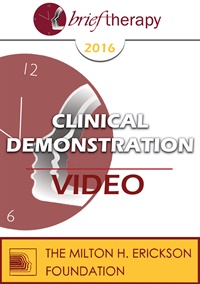Credit available - Click Here for more information
- Average Rating:
- Not yet rated
- Topic Areas:
- Attachment | Neuroscience | Keynotes | Continuing Education | Differentiation | Couples Therapy
- Categories:
- Couples Conference | Couples Conference 2018 | Online Continuing Education | Pioneers in Couples and Family Therapy
- Faculty:
- Stan Tatkin, PsyD, MFT
- Course Levels:
- Master Degree or Higher in Health-Related Field
- Duration:
- 50:59
- Format:
- Audio and Video
- Original Program Date:
- May 06, 2018
- Short Description:
- This presentation integrates foundational theories of attachment, differentiation, and individuation with current neuroscience to inform a psychobiological approach to couple therapy. Tatkin examines how early developmental models apply to partners with varying social-emotional complexity, highlighting deficits like alexithymia and theory of mind. Clinicians are encouraged to adapt interventions based on cognitive capacity and emphasize face-to-face, collaborative engagement in session.
- Price:
-
Sale is $29.00
price reduced from Base Price - $59.00
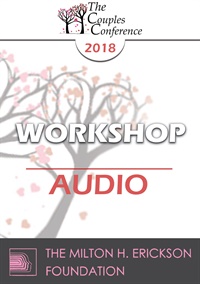
- Average Rating:
- Not yet rated
- Topic Areas:
- Workshops | Personality Disorders | Couples Therapy
- Categories:
- Couples Conference | Couples Conference 2018 | Pioneers in Couples and Family Therapy
- Faculty:
- Stan Tatkin, PsyD, MFT
- Duration:
- 2:03:49
- Format:
- Audio Only
- Original Program Date:
- May 06, 2018
- Short Description:
- This workshop reframes couple therapy for personality-disordered partners through a psychobiological, polytheoretical lens. Focusing on borderline, narcissistic, and schizoid presentations, it equips clinicians to differentiate these from insecure or neurotic traits and intervene without over-individualizing. Practical tools help therapists manage complex defenses, sustain neutrality, and maintain a strong therapeutic frame in high-stakes relational systems.
- Price:
- $15.00 - Base Price
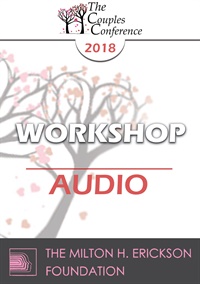
- Average Rating:
- Not yet rated
- Topic Areas:
- Sex and Sexuality | Workshops | Couples Therapy
- Categories:
- Couples Conference | Couples Conference 2018 | Pioneers in Couples and Family Therapy
- Faculty:
- Stan Tatkin, PsyD, MFT
- Duration:
- 1:59:07
- Format:
- Audio Only
- Original Program Date:
- May 04, 2018
- Short Description:
- This workshop explores sex as a core issue in couple therapy, emphasizing psychobiological and attachment-based frameworks. Tatkin presents bottom-up interviewing and assessment techniques that address implicit somatic responses, performance anxiety, and intimacy challenges. Clinicians learn to integrate neurobiology, arousal regulation, and attachment style into practical interventions for treating sexual dissatisfaction and dysfunction.
- Price:
- $15.00 - Base Price

- Average Rating:
- Not yet rated
- Topic Areas:
- Couples Therapy | Workshops | Conflict | Psychobiological Approach to Couples Therapy (PACT)
- Categories:
- Couples Conference | Couples Conference 2017 | Pioneers in Couples and Family Therapy
- Faculty:
- Stan Tatkin, PsyD, MFT
- Duration:
- 1:20:34
- Format:
- Audio Only
- Original Program Date:
- Apr 02, 2017
- Short Description:
- This workshop explores how to identify and resolve deal breakers—conflicts that, left unaddressed, threaten the viability of a relationship. Grounded in a psychobiological approach, Tatkin outlines a structured process that supports secure functioning, including techniques like cross-questioning, the five-minute argument, and amplifying conflict for clarity. Therapists are encouraged to take the long view, helping partners face uncomfortable truths while strengthening alliance and accountability.
- Price:
- $15.00 - Base Price

- Average Rating:
- Not yet rated
- Topic Areas:
- Addiction | Deception | Keynotes | Psychobiological Approach to Couples Therapy (PACT) | Couples Therapy | Infidelity
- Categories:
- Couples Conference | Couples Conference 2017 | Pioneers in Couples and Family Therapy
- Faculty:
- Stan Tatkin, PsyD, MFT
- Duration:
- 55:09
- Format:
- Audio Only
- Original Program Date:
- Apr 01, 2017
- Short Description:
- This presentation examines deception in couple therapy through psychobiological and neurobiological frameworks. Tatkin advocates for cross-disciplinary learning—drawing from neuroscience and animal behavior—to sharpen clinical perception. Emphasis is placed on detecting deception early through micro expressions, behavioral cues, and video analysis, offering therapists strategic tools for addressing affairs, addictions, and trust breaches in relational work.
- Price:
- $15.00 - Base Price

- Average Rating:
- Not yet rated
- Topic Areas:
- Addiction | Deception | Keynotes | Psychobiological Approach to Couples Therapy (PACT) | Couples Therapy | Infidelity
- Categories:
- Couples Conference | Couples Conference 2017 | Pioneers in Couples and Family Therapy
- Faculty:
- Stan Tatkin, PsyD, MFT
- Course Levels:
- Master Degree or Higher in Health-Related Field
- Duration:
- 55:09
- Format:
- Audio and Video
- Original Program Date:
- Apr 01, 2017
- Short Description:
- This presentation examines deception in couple therapy through psychobiological and neurobiological frameworks. Tatkin advocates for cross-disciplinary learning—drawing from neuroscience and animal behavior—to sharpen clinical perception. Emphasis is placed on detecting deception early through micro expressions, behavioral cues, and video analysis, offering therapists strategic tools for addressing affairs, addictions, and trust breaches in relational work.
- Price:
-
Sale is $29.00
price reduced from Base Price - $59.00
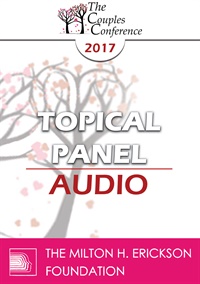
- Average Rating:
- Not yet rated
- Topic Areas:
- Infidelity | Topical Panels | Couples Therapy | Deception
- Categories:
- Couples Conference | Couples Conference 2017 | Pioneers in Couples and Family Therapy
- Faculty:
- Alexandra Katehakis, MA, MFT | Marty Klein, PhD | Stan Tatkin, PsyD, MFT
- Duration:
- 56:45
- Format:
- Audio Only
- Original Program Date:
- Mar 31, 2017
- Short Description:
- This panel explores infidelity as a multifaceted breach of trust, extending beyond sexual betrayal. Drawing from psychodynamic and neurobiological perspectives, the presenters examine deception, gaslighting, and confabulation. Clinical focus includes managing countertransference, maintaining therapeutic neutrality, and guiding partners through accountability, emotional repair, and post-crisis growth.
- Price:
- $15.00 - Base Price

- Average Rating:
- Not yet rated
- Topic Areas:
- Couples Therapy | Workshops | Betrayal | Psychobiological Approach to Couples Therapy (PACT)
- Categories:
- Couples Conference | Couples Conference 2017 | Pioneers in Couples and Family Therapy
- Faculty:
- Stan Tatkin, PsyD, MFT
- Duration:
- 2:08:41
- Format:
- Audio Only
- Original Program Date:
- Mar 31, 2017
- Short Description:
- This workshop examines betrayal in its many forms—infidelity, deception, secrecy—as a core challenge in couple therapy. Using a psychobiological lens, Tatkin emphasizes moving from self- to co-regulation and fostering secure-functioning partnerships built on transparency and mutual care. Techniques like crossing, declarations, and the “King and Queen” exercise help therapists structure repair and guide couples through trust restoration.
- Price:
- $15.00 - Base Price

- Average Rating:
- Not yet rated
- Topic Areas:
- Infidelity | Topical Panels | Couples Therapy | Deception
- Categories:
- Couples Conference | Couples Conference 2017 | Pioneers in Couples and Family Therapy
- Faculty:
- Alexandra Katehakis, MA, MFT | Marty Klein, PhD | Stan Tatkin, PsyD, MFT
- Course Levels:
- Master Degree or Higher in Health-Related Field
- Duration:
- 56:45
- Format:
- Audio and Video
- Original Program Date:
- Mar 31, 2017
- Short Description:
- This panel explores infidelity as a multifaceted breach of trust, extending beyond sexual betrayal. Drawing from psychodynamic and neurobiological perspectives, the presenters examine deception, gaslighting, and confabulation. Clinical focus includes managing countertransference, maintaining therapeutic neutrality, and guiding partners through accountability, emotional repair, and post-crisis growth.
- Price:
-
Sale is $29.00
price reduced from Base Price - $59.00
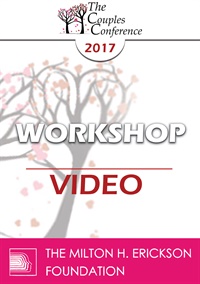
- Average Rating:
- Not yet rated
- Topic Areas:
- Couples Therapy | Workshops | Betrayal | Psychobiological Approach to Couples Therapy (PACT)
- Categories:
- Couples Conference | Couples Conference 2017 | Pioneers in Couples and Family Therapy
- Faculty:
- Stan Tatkin, PsyD, MFT
- Course Levels:
- Master Degree or Higher in Health-Related Field
- Duration:
- 2:08:41
- Format:
- Audio and Video
- Original Program Date:
- Mar 31, 2017
- Short Description:
- This workshop examines betrayal in its many forms—infidelity, deception, secrecy—as a core challenge in couple therapy. Using a psychobiological lens, Tatkin emphasizes moving from self- to co-regulation and fostering secure-functioning partnerships built on transparency and mutual care. Techniques like crossing, declarations, and the “King and Queen” exercise help therapists structure repair and guide couples through trust restoration.
- Price:
-
Sale is $29.00
price reduced from Base Price - $59.00
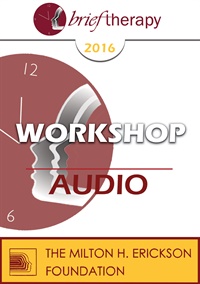
- Average Rating:
- Not yet rated
- Topic Areas:
- Couples Therapy | Trance | Workshops | Hypnotic Induction
- Categories:
- Brief Therapy Conference | Brief Therapy Conference 2016 | Pioneers in Couples and Family Therapy
- Faculty:
- Stan Tatkin, PsyD, MFT
- Duration:
- 3:11:14
- Format:
- Audio Only
- Original Program Date:
- Dec 11, 2016
- Short Description:
- This workshop (the first of two) introduces the use of informal trance and rolling chairs in couple therapy to support arousal regulation and deeper relational work. Drawing from the Psychobiological Approach to Couple Therapy (PACT), the session demonstrates how proximity, eye contact, and movement can elicit trance states, enabling therapists to access implicit issues. Techniques like the crossing and “down the middle” methods help clarify dynamics and promote secure functioning. Attendees learn to manage emotional states, reduce stress loads, and guide partners toward more resilient connection.
- Price:
- $15.00 - Base Price
- Average Rating:
- Not yet rated
- Topic Areas:
- Clinical Demonstrations | Couples Therapy | Therapist Techniques
- Categories:
- Brief Therapy Conference | Brief Therapy Conference 2016 | Pioneers in Couples and Family Therapy
- Faculty:
- Stan Tatkin, PsyD, MFT
- Course Levels:
- Master Degree or Higher in Health-Related Field
- Duration:
- 1:00:11
- Format:
- Audio and Video
- Original Program Date:
- Dec 10, 2016
- Short Description:
- This clinical demonstration showcases the "Crossing" method for couples therapy, using psychobiological strategies to guide partners toward secure functioning. Through the case of a grieving couple, it illustrates how to interpret non-verbal cues, address unspoken needs, and build mutual support. The session offers practical tools to help couples operate as a unified psychological system, regardless of attachment style.
- Price:
-
Sale is $29.00
price reduced from Base Price - $59.00
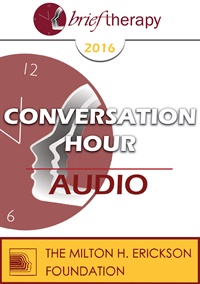
- Average Rating:
- Not yet rated
- Topic Areas:
- Conversation Hours | Attachment | Couples Therapy | Therapeutic Process
- Categories:
- Brief Therapy Conference | Brief Therapy Conference 2016 | Pioneers in Couples and Family Therapy
- Faculty:
- Stan Tatkin, PsyD, MFT
- Duration:
- 1:00:17
- Format:
- Audio Only
- Original Program Date:
- Dec 10, 2016
- Short Description:
- This conversation introduces a polytheoretical approach to couple therapy grounded in secure functioning—a fair, just, and sensitive two-person system. It integrates attachment theory, arousal regulation, and developmental neurobiology. Techniques include supportive confrontation, cross-tracking, and "going down the middle" to engage both partners effectively. Practical strategies are offered for managing distancing and clinging dynamics and building strong therapeutic alliances.
- Price:
- $15.00 - Base Price
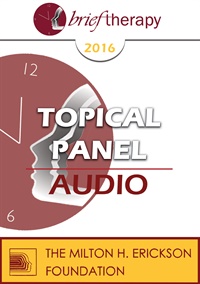
- Average Rating:
- Not yet rated
- Topic Areas:
- Family Therapy | Topical Panels | Marriage
- Categories:
- Brief Therapy Conference | Brief Therapy Conference 2016 | Pioneers in Couples and Family Therapy
- Faculty:
- Lynn Lyons, LICSW | Wendel Ray, PhD | Stan Tatkin, PsyD, MFT | Jeffrey Zeig, PhD
- Duration:
- 1:02:12
- Format:
- Audio Only
- Original Program Date:
- Dec 10, 2016
- Short Description:
- This panel on family and couples therapy explores control dynamics, dyadic systems, and creative intervention strategies. Topics include historical views on relational control, the use of a psychobiological model for understanding couple dynamics, and family-centered approaches for childhood anxiety. The panelists emphasize metaphor, immediate action, extended sessions, and trust-building as key components for effective therapeutic outcomes.
- Price:
- $15.00 - Base Price
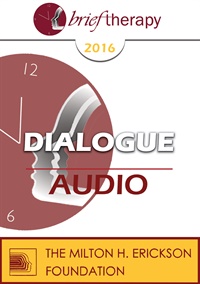
- Average Rating:
- Not yet rated
- Topic Areas:
- Attachment | Neuroscience | Psychology | Dialogues | Mindfulness | Buddhism
- Categories:
- Brief Therapy Conference | Brief Therapy Conference 2016 | Pioneers in Couples and Family Therapy
- Faculty:
- Ronald Siegel, PsyD | Stan Tatkin, PsyD, MFT
- Duration:
- 1:03:00
- Format:
- Audio Only
- Original Program Date:
- Dec 10, 2016
- Short Description:
- This presentation bridges mindfulness, Buddhist psychology, neuroscience, and attachment theory to deepen therapeutic work. It explains how mindfulness fosters awareness and self-regulation, while secure attachment provides emotional safety. Neurobiological insights—like cortical thickening and improved regulation—support the integration of these practices. Practical applications focus on using mindfulness and mutual regulation to enhance attunement and connection in couples therapy.
- Price:
- $15.00 - Base Price
- Average Rating:
- Not yet rated
- Topic Areas:
- Neuroscience | Topical Panels
- Categories:
- Couples Conference | Couples Conference 2016 | Pioneers in Couples and Family Therapy
- Faculty:
- Stan Tatkin, PsyD, MFT | Pat Love, EdD | Helen E. Fisher, PhD
- Course Levels:
- Master Degree or Higher in Health-Related Field
- Duration:
- 01:01:00
- Format:
- Audio and Video
- Original Program Date:
- May 13, 2016
- Short Description:
- This panel bridges neuroscience and relational theory, examining how personality, hormones, and brain systems shape intimacy. Fisher presents neurobiological personality types; Tatkin underscores the value of scheduling sex to sustain closeness; and Love explores hormonal influences on gendered relationship challenges. The group reflects on dopamine’s role in love and considers how modern courtship trends may support lasting bonds.
- Price:
-
Sale is $29.00
price reduced from Base Price - $59.00
- Average Rating:
- Not yet rated
- Topic Areas:
- Couples Therapy | Keynotes | Psychobiological Approach to Couples Therapy (PACT)
- Categories:
- Couples Conference | Couples Conference 2016 | Pioneers in Couples and Family Therapy
- Faculty:
- Stan Tatkin, PsyD, MFT
- Course Levels:
- Master Degree or Higher in Health-Related Field
- Duration:
- 51:04
- Format:
- Audio and Video
- Original Program Date:
- May 13, 2016
- Short Description:
- This session presents a psychobiological approach to guiding couples toward secure functioning—where partners act as a cooperative, principle-driven system. Tatkin demonstrates cross-dialogic techniques for clarifying attachment strategies, desires, and hidden agendas. Emphasizing non-verbal attunement, state-dependent perception, and strategic therapist stance, the model offers clinicians tools to decode implicit dynamics and foster lasting relational alignment.
- Price:
-
Sale is $29.00
price reduced from Base Price - $59.00
- Average Rating:
- Not yet rated
- Topic Areas:
- Couples Therapy | Workshops | Deception | Psychobiological Approach to Couples Therapy (PACT)
- Categories:
- Couples Conference | Couples Conference 2016 | Pioneers in Couples and Family Therapy
- Faculty:
- Stan Tatkin, PsyD, MFT
- Course Levels:
- Master Degree or Higher in Health-Related Field
- Duration:
- 02:10:07
- Format:
- Audio and Video
- Original Program Date:
- May 13, 2016
- Short Description:
- This session explores deception in couples therapy through a psychobiological lens, integrating attachment, arousal regulation, and neuroscience. Tatkin highlights the limits of conscious awareness in relational conflict and the role of implicit memory and nonverbal cues in uncovering hidden agendas. Using tools like digital video analysis, cross-questioning, and presumptive statements, therapists are guided to promote secure functioning and foster repair following betrayal.
- Price:
-
Sale is $29.00
price reduced from Base Price - $59.00
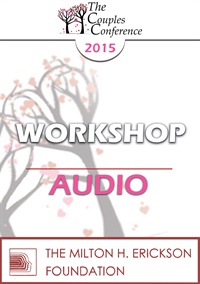
- Average Rating:
- Not yet rated
- Topic Areas:
- Couples Therapy | Workshops | Psychobiological Approach to Couples Therapy (PACT) | Therapist Development
- Categories:
- Couples Conference | Couples Conference 2015 | Pioneers in Couples and Family Therapy
- Faculty:
- Stan Tatkin, PsyD, MFT
- Duration:
- 1:54:28
- Format:
- Audio Only
- Original Program Date:
- Apr 24, 2015
- Short Description:
- This workshop explores couple therapy with highly disorganized partners, where therapeutic structure and stance are essential. Using attachment, regulation, and neurobiological models, it addresses trauma-related dysregulation. Clinical examples illustrate how facial cues, pacing, and therapist attunement support emotional regulation and relational repair in the face of volatility.
- Price:
- $15.00 - Base Price

CC12 Workshop 14 – Focusing on Deficits in Couple Therapy: The PACT® Methodology – Stan Tatkin, PsyD
- Average Rating:
- Not yet rated
- Topic Areas:
- Workshops | Psychobiological Approach to Couples Therapy (PACT) | Couples Therapy | Mindfulness
- Categories:
- Couples Conference | Couples Conference 2012 | Pioneers in Couples and Family Therapy
- Faculty:
- Stan Tatkin, PsyD, MFT
- Duration:
- 1:51:28
- Format:
- Audio Only
- Original Program Date:
- Apr 29, 2012
- Short Description:
- This workshop explores how social-emotional deficits like alexithymia, affect blindness, and poor theory of mind disrupt co-regulation and erode relational security. Tatkin offers practical tools for assessing such deficits, distinguishing them from defenses, and guiding couples toward clearer emotional signaling, mutual understanding, and more accurate attribution under stress.
- Price:
- $15.00 - Base Price
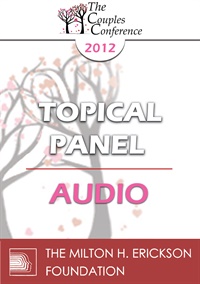
- Average Rating:
- Not yet rated
- Topic Areas:
- Attachment | Couples Therapy | Neuroscience | Topical Panels | Therapist Development
- Categories:
- Couples Conference | Couples Conference 2012 | Pioneers in Couples and Family Therapy
- Faculty:
- Rick Hanson, PhD | Harville Hendrix, PhD | Stan Tatkin, PsyD, MFT | Scott R. Woolley, PhD
- Duration:
- 59:38
- Format:
- Audio Only
- Original Program Date:
- Apr 28, 2012
- Short Description:
- This panel explores how attachment theory and neuroscience shape couples therapy. It emphasizes the importance of secure bonds, therapist presence, emotional attunement, and brain-based insights into relational dynamics. Panelists examine how early attachment, brain function, and cultural context influence therapeutic effectiveness.
- Price:
- $15.00 - Base Price
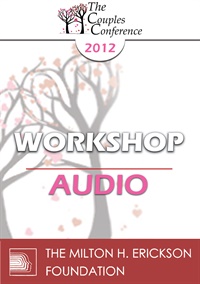
- Average Rating:
- Not yet rated
- Topic Areas:
- Couples Therapy | Workshops | Psychobiological Approach to Couples Therapy (PACT) | Therapist Techniques
- Categories:
- Couples Conference | Couples Conference 2012 | Pioneers in Couples and Family Therapy
- Faculty:
- Stan Tatkin, PsyD, MFT
- Duration:
- 1:28:49
- Format:
- Audio Only
- Original Program Date:
- Apr 27, 2012
- Short Description:
- Introduces a psychobiological approach to couple therapy that shifts from insight-based to experiential methods. Using bottom-up techniques—like surprise interventions, movement, and the Lover’s Pose—therapists can access implicit systems through micro-expressions and body cues, helping couples regulate arousal, deepen attachment, and build secure-functioning relationships.
- Price:
- $15.00 - Base Price
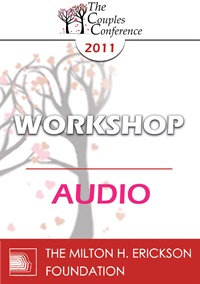
- Average Rating:
- Not yet rated
- Topic Areas:
- Workshops | Couples Therapy | Psychobiological Approach to Couples Therapy (PACT) | Neurobiology
- Categories:
- Couples Conference | Couples Conference 2011 | Pioneers in Couples and Family Therapy
- Faculty:
- Stan Tatkin, PsyD, MFT
- Duration:
- 1:56:30
- Format:
- Audio Only
- Original Program Date:
- Apr 03, 2011
- Short Description:
- This workshop presents a psychobiological approach to couples therapy, focusing on nonverbal communication, attachment styles, and arousal regulation. Techniques include frame-by-frame video analysis, movement-based assessments, and real-time biofeedback. Practical tools like camera setup, rolling chairs, and video playback are used to enhance therapist attunement, mutual regulation, and client insight—while underscoring ethical tech use and client privacy.
- Price:
- $15.00 - Base Price
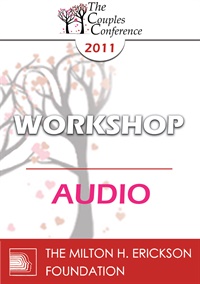
- Average Rating:
- Not yet rated
- Topic Areas:
- Couples Therapy | Workshops | Psychobiological Approach to Couples Therapy (PACT) | Neurobiology
- Categories:
- Couples Conference | Couples Conference 2011 | Pioneers in Couples and Family Therapy
- Faculty:
- Stan Tatkin, PsyD, MFT
- Duration:
- 2:05:40
- Format:
- Audio Only
- Original Program Date:
- Apr 03, 2011
- Short Description:
- This workshop explains and proves the meaning of the title, that romantic partners mostly do not know what they are doing or why. Tatkin explores a psychobiological approach to couples therapy, emphasizing attachment styles, neurobiology, and nonverbal communication. Topics include stress regulation via the amygdala and vagus nerve, the role of the right hemisphere in emotional processing, and techniques like voice modulation and play. Case examples illustrate how brief, affect-driven interventions help partners co-regulate, manage conflict, and improve relational dynamics.
- Price:
- $15.00 - Base Price
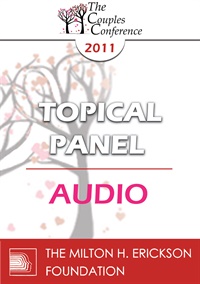
- Average Rating:
- Not yet rated
- Topic Areas:
- Topical Panels | Internal Family Systems (IFS) | Psychotherapy
- Categories:
- Couples Conference | Couples Conference 2011 | Pioneers in Couples and Family Therapy
- Faculty:
- Jeffrey Zeig, PhD | Richard Schwartz, PhD | Stan Tatkin, PsyD, MFT
- Duration:
- 1:05:16
- Format:
- Audio Only
- Original Program Date:
- Apr 02, 2011
- Short Description:
- This panel explores the Internal Family Systems (IFS) model, focusing on the idea of "parts" as subpersonalities that shape how individuals cope and relate. Speakers examine the roles of protectors and exiles, and how mindful, regulated states can foster change. They compare similar concepts from other models, including transactional analysis and object relations, and discuss tools like enactments and hypnosis to help clients access and work with their parts.
- Price:
- $15.00 - Base Price


